In the heart of Japanese culture lies an ancient sport that captures the essence of strength, discipline, and tradition – Sumo wrestling. Sumo wrestling stands as one of the most iconic and enduring cultural traditions of Japan, embodying a unique blend of athleticism, ritual, and history. With roots stretching back centuries, this revered sport continues to captivate audiences worldwide. In this exploration, we delve into the captivating world of sumo wrestling, covering its history, rules, rituals, training, cultural significance that defines the Sumo wrestlers.
Historical Origins & Evolution

Sumo’s origins trace back to ancient Japan, where it was not just a sport but a sacred ritual performed to appease Shinto deities. The sport’s early rituals often involved ceremonies to ensure bountiful harvests, with sumo bouts serving as entertainment during these festivities. Over time, sumo evolved from these ritualistic beginnings into a competitive sport with defined rules and techniques.
The first recorded sumo tournament dates back to the Kamakura period (1185–1333), an era marked by feudal warfare and the establishment of samurai culture. However, it wasn’t until the Edo period (1603–1868) that sumo wrestling gained widespread popularity, becoming an essential part of the cultural landscape. During this period, sumo matches were held to raise funds for shrines and temples, and the sport became a source of pride for different regions.
Rules and Gameplay

Central to Sumo is the dohyo, a ring made of clay and straw where the matches take place. The main objective is simple: force your opponent out of the ring or make any part of their body, other than the soles of their feet, touch the ground. Matches are short but intense, often lasting only a few seconds.
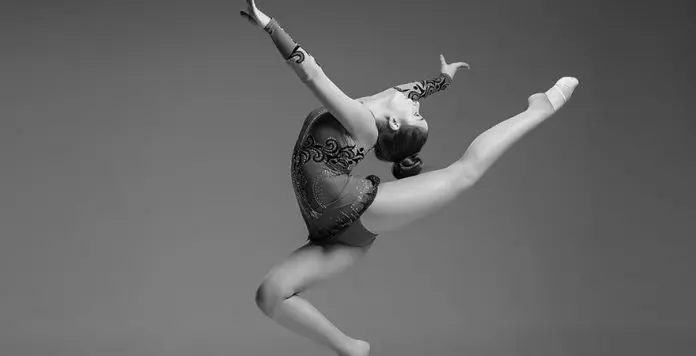
During the combat, the following behaviours are not permitted:
- Hair pulling
- Eye gouging
- Choking is prohibited (but pushing with open hands at your opponent’s throat is permitted).
- Grabbing your opponent’s Mawashi’s crotch area
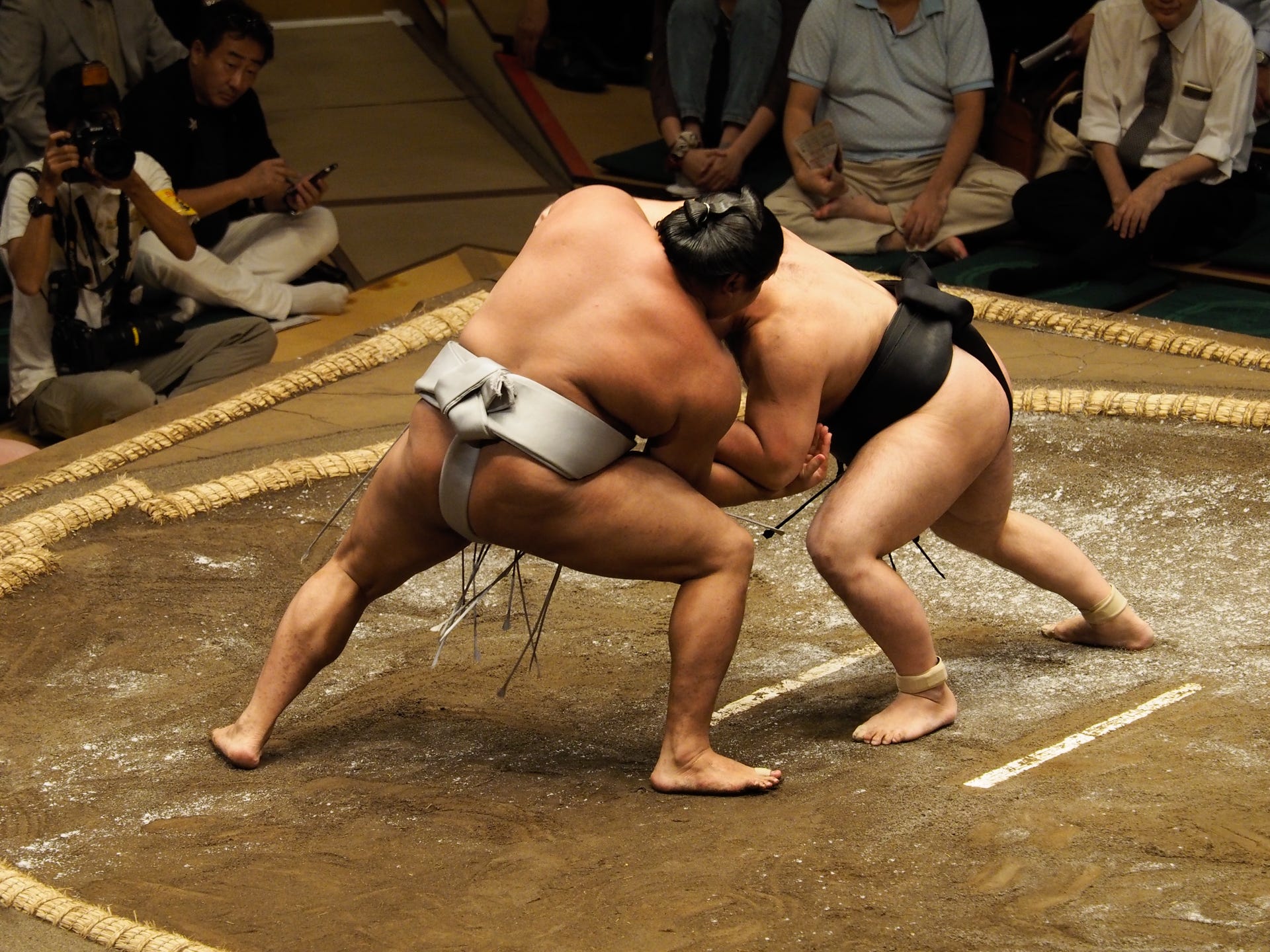
Sumo wrestlers, or rikishi, are divided into various ranks, with the highest being Yokozuna. The hierarchical structure is deeply respected, and the rituals associated with each match reflect the sport’s sacred nature.
There are no weight categories. The smaller rikishi has the advantage of being able to shift aside and sneak in behind their larger opponent, utilising his huge momentum against him. It’s not only about size; agility is important as well.
Techniques & Strategies
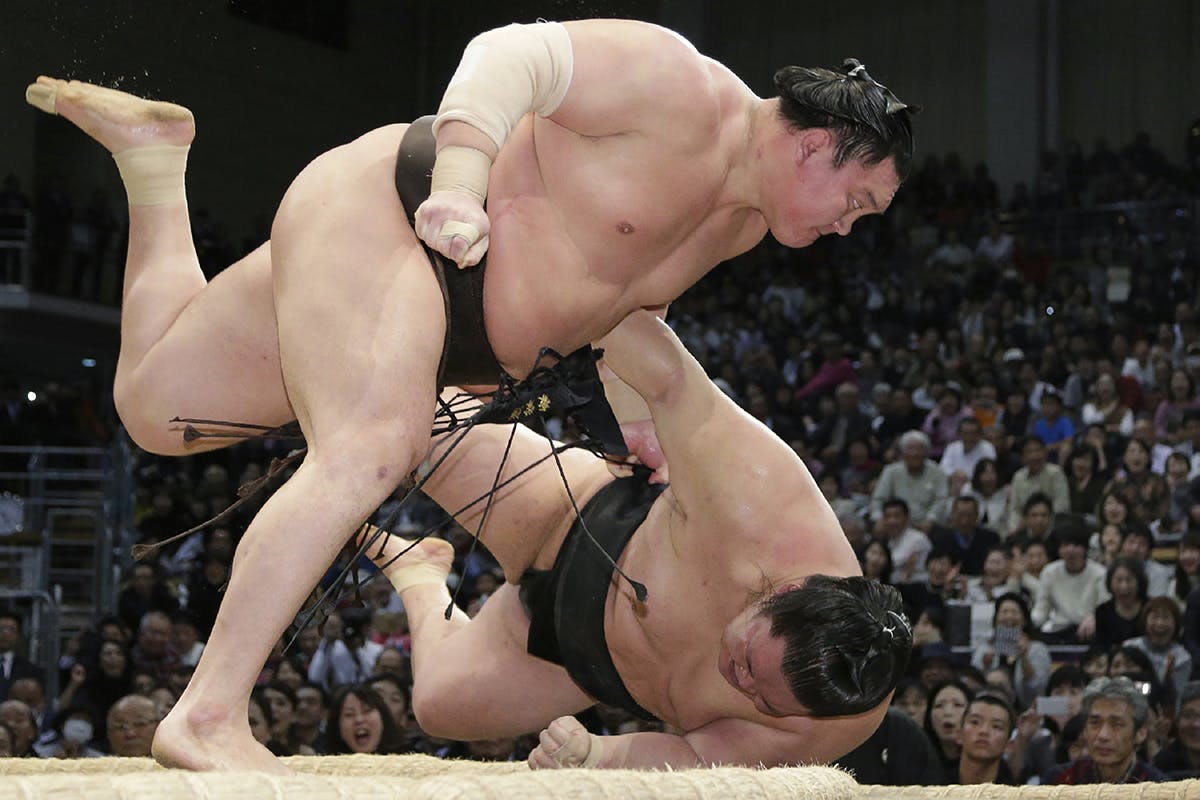
Sumo wrestling is not just about sheer size and strength; it’s a sport that requires intelligence, strategy, and quick reflexes. Wrestlers utilize a range of techniques, or kimarite, to defeat their opponents. These include pushing techniques like oshi (pushing) and tsuki (thrusting), as well as throwing techniques like uwatenage (overarm throw) and shitatenage (underarm throw). A deep understanding of the opponent’s movements and weaknesses is crucial for success.
![]() Also Read | Jiu-Jitsu: Know about the Self Defense Martial Art & Combat Sport
Also Read | Jiu-Jitsu: Know about the Self Defense Martial Art & Combat Sport
Rituals & Ceremonies
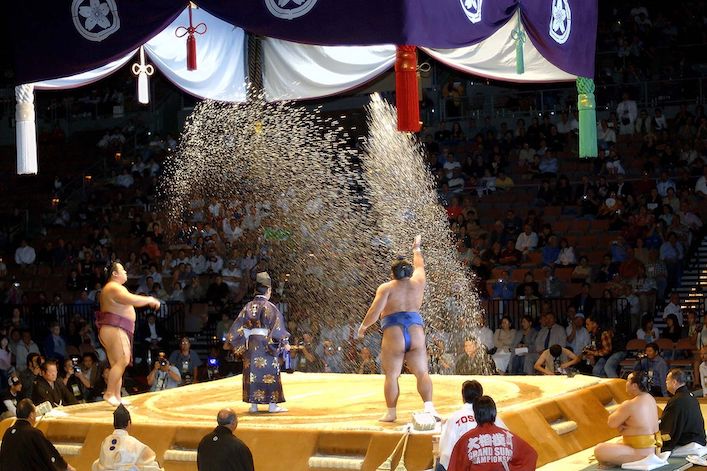
Before each bout, the wrestlers perform a series of symbolic rituals. The most well-known ritual, which occurs right before the commencement of the match, such as the shiko (stomping ritual) in which the wrestler raising one leg and stamping down on the ground numerous times. This practice has been practiced since ancient times when samurai would do it before combat to intimidate the enemy.
Wrestlers also routinely toss salt on the ring floor and outside the ring. This is seen as an act which purifies the ring and wards off evil spirits.
Training & Lifestyle
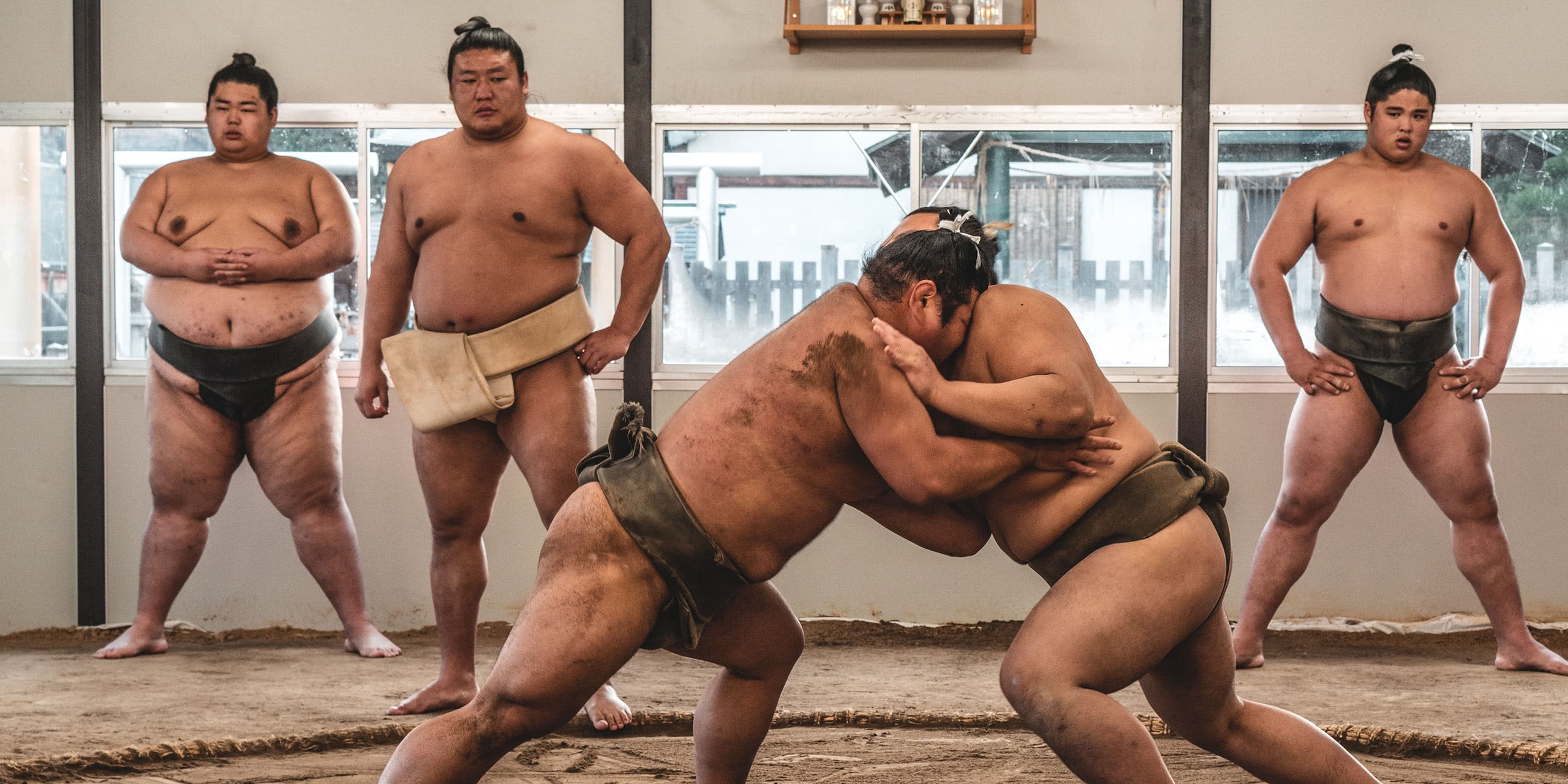
A sumo wrestler’s life is characterized by rigorous training and strict lifestyle choices. Sumo stables, or heya, serve as both training grounds and living quarters for wrestlers. Their daily routine includes early morning practices, intense physical training, and adherence to a specific diet to gain weight and build strength. Sumo wrestlers’ physiques are a testament to their commitment, often weighing well over 300 pounds.
Cultural Significance and Challenges

Sumo wrestling is more than simply a sport; it is a cultural phenomenon inextricably linked to Japan’s history and values. It embodies characteristics like discipline, respect, and tenacity, all of which are consistent with traditional Japanese aesthetics.
However, sumo has had difficulties over the years. Match-fixing, hazing, and bullying allegations have surfaced, prompting a reevaluation of the sport’s practices and ethics. Sumo organizations have sought to resolve these problems and preserve the sport’s integrity.

Global Influence & Future
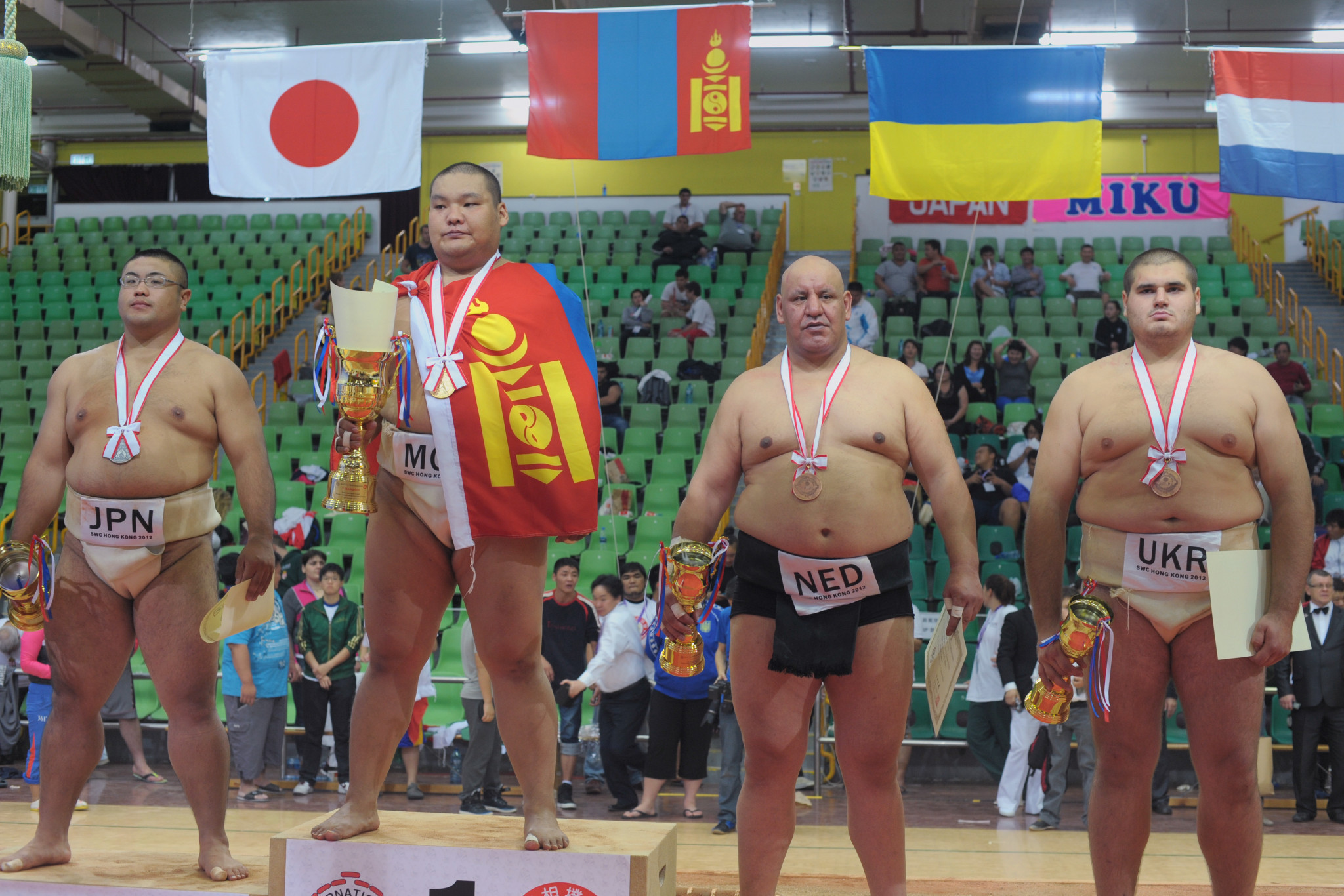
While sumo’s heart remains in Japan, its appeal has transcended borders. International tournaments and exhibitions have introduced sumo to audiences around the world, sparking interest and admiration. As Japan continues to modernize, sumo adapts as well, embracing technology for training and outreach while preserving its essential traditions.
In conclusion, sumo wrestling encapsulates a rich tapestry of history, tradition, and athleticism. From its ancient beginnings as a Shinto ritual to its modern status as a global sport, sumo’s journey reflects the evolution of Japanese culture itself. With its unique rituals, rigorous training, and powerful displays of strength, sumo wrestling stands as a testament to the enduring spirit of tradition in an ever-changing world.
Interesting Facts on Sumo Wrestling
- Sumo life may be challenging, and Sumo sometimes lives for 20 years less than the typical Japanese life expectancy.
- Sumo wrestlers began as wiry and powerful men. However, modern professional sumo learned that when their weight increased, it became increasingly difficult to move.
- Sumo typically has a hotpot dinner rich in fat, pork, veggies, and noodles.
- Each sumo stable is only allowed to recruit one foreigner.
Conclusion
Sumo wrestling stands as a testament to the intricate interplay between tradition and athleticism. Its history, rituals, and techniques have captivated audiences for generations, and its fusion of strength, strategy, and spirituality continues to inspire admiration. As Sumo wrestling adapts to modern times, its timeless essence remains, reminding us of the beauty of preserving heritage while embracing change. So, the next time you witness a Sumo match, you’ll understand that it’s not just a sport; it’s a journey into the heart of Japan‘s rich cultural tapestry.
![]() Read More | A Complete Guide to Shotokan Karate
Read More | A Complete Guide to Shotokan Karate
FAQs
Sumo’s roots trace back to ancient Japan, evolving from Shinto rituals to become a revered sport, symbolizing strength and tradition.
The aim is to force your opponent out of the ring or make any part of their body, except the soles of their feet, touch the ground.
Rikishi (wrestlers) perform symbolic rituals like shiko (stomping) and the salt toss, purifying the ring and showcasing respect for tradition.
Wrestlers employ techniques like oshi (pushing) and uwatenage (overarm throw), combining strength, strategy, and quick reflexes for victory.
Traditionally excluded, rules have evolved to encourage inclusivity, allowing women to participate in ceremonies and contribute to Sumo’s modernization.


0 Comments